Why SaaS Is Transforming Business – And How It Can Help Yours
Did you know that over 80% of enterprises now use cloud-based software solutions daily? That’s not just a trend—it’s a transformation.
In today’s digital-first world, SaaS (Software as a Service) has become the backbone of business innovation. From startups to Fortune 500 companies, organizations are leveraging SaaS platforms to streamline operations, reduce costs, and scale faster than ever before.
This article explores why SaaS is transforming business—and more importantly, how you can harness its power to grow your own.
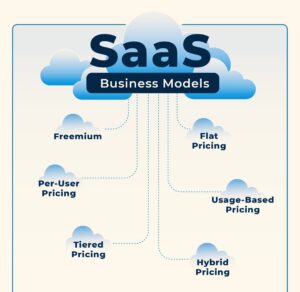
Table of Contents
The Problem with Traditional Software
Before the rise of SaaS, businesses relied heavily on on-premise software systems. These required:
- Expensive upfront licensing fees
- Dedicated IT infrastructure and maintenance
- Lengthy deployment cycles
- Limited scalability and flexibility
Such limitations made it difficult for small and medium-sized businesses (SMBs) to compete with larger players who had the resources to invest in complex software ecosystems.
How SaaS Solves These Problems
SaaS flips the script by offering software through the cloud—accessible anytime, anywhere, with an internet connection.
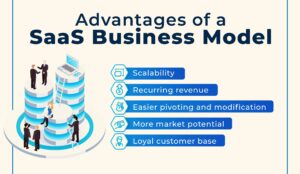
Key Advantages of SaaS Over Traditional Models
- Lower Costs: Pay-as-you-go pricing eliminates large capital expenditures.
- Faster Deployment: No installation needed—just log in and start using.
- Automatic Updates: Providers handle maintenance, security patches, and upgrades.
- Scalability: Easily add or remove users as your business grows or changes.
With SaaS, even startups can access enterprise-level tools like customer relationship management (CRM), marketing automation, and analytics—without the overhead.
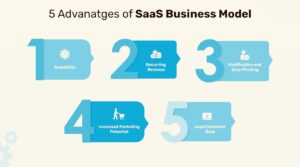
Key Benefits of Using SaaS
Let’s dive deeper into how SaaS is reshaping the business landscape:
1. Cost Efficiency
According to a study by Gartner, companies using SaaS save up to 40% in operational costs compared to those using traditional software models.
2. Enhanced Collaboration
Tools like Slack, Asana, and Google Workspace allow teams to collaborate seamlessly across time zones and devices—all thanks to SaaS.
3. Data-Driven Decisions
SaaS platforms often include built-in analytics and dashboards, empowering businesses to make informed decisions quickly.
4. Global Accessibility
With no hardware dependencies, employees can work remotely or on the go—critical in today’s hybrid work environment.
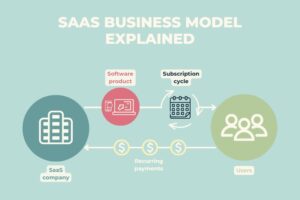
Best Practices for Implementing SaaS
To maximize ROI from your SaaS investments, follow these expert-recommended practices:
- Define Clear Objectives: Know what you want to achieve before choosing a tool.
- Evaluate Vendors Carefully: Compare features, pricing, support, and integration capabilities.
- Ensure Data Security: Review vendor compliance certifications like ISO 27001 or SOC 2.
- Train Your Team: Provide proper training to ensure adoption and productivity.
- Monitor Usage & Performance: Use usage reports to optimize licenses and identify underused tools.
For more tips on selecting the right SaaS tools, check out our guide: How to Choose the Right SaaS Tools for Your Business.
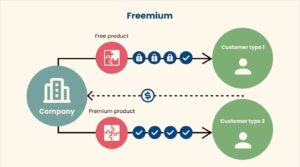
Common Mistakes to Avoid When Adopting SaaS
While SaaS offers many advantages, missteps can lead to wasted budgets and poor user adoption. Here are some common mistakes:
- Overbuying Licenses: Many companies purchase more seats than they need.
- Neglecting Integration: Failing to integrate SaaS apps with existing systems creates silos.
- Ignoring Governance: Lack of oversight leads to “shadow IT” and security risks.
- Poor Change Management: Employees resist new tools without proper communication and training.
According to Forrester, 60% of companies admit to having shadow IT due to unmanaged SaaS usage.
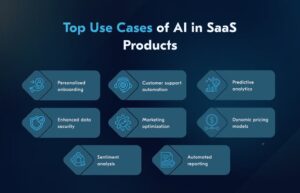
Case Studies: Real Companies Leveraging SaaS
Here are a few examples of businesses that have successfully adopted SaaS to drive growth:
Case Study 1: HubSpot for Inbound Marketing
HubSpot’s all-in-one CRM platform helped a mid-sized e-commerce brand increase lead conversion by 35% within six months.
Case Study 2: Salesforce for Customer Engagement
A B2B tech firm integrated Salesforce into their workflow and reduced sales cycle time by 28%.
Case Study 3: ZoomInfo for Sales Intelligence
Using ZoomInfo’s SaaS-powered data platform, a SaaS startup improved its outbound sales targeting accuracy by 50%.
Frequently Asked Questions (FAQ)
What does SaaS stand for?
SaaS stands for Software as a Service, a cloud-based model where software is delivered over the internet.
Is SaaS secure?
Yes, when chosen carefully. Look for providers with strong encryption, regular audits, and compliance certifications.
Can SaaS be customized?
Many SaaS platforms offer customization options through APIs, plugins, or integrations with other tools.
How do I choose the right SaaS provider?
Consider factors like cost, ease of use, integration capability, customer reviews, and vendor reliability.
What industries benefit most from SaaS?
All industries—from healthcare to education to finance—can benefit from SaaS due to its flexibility and scalability.
Conclusion: Embrace the Future with SaaS
The shift to SaaS is more than just a technological upgrade—it’s a strategic advantage. By reducing costs, improving agility, and enabling remote collaboration, SaaS empowers businesses to innovate faster and stay competitive.
If you’re not already using SaaS tools, now is the time to explore how they can help your business grow. Whether you’re managing customer relationships, automating marketing, or analyzing performance, there’s a SaaS solution designed for your needs.
👉 Comment below with your thoughts or share which SaaS tools have worked best for your company!
Want more insights? Explore these related articles:
